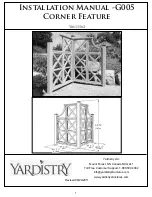
Flask Method (Liquid N)
For veneers, ensure that the walls are thick
enough (about 1 mm).
The wax mould should be as close in shape
and modelling to the final work as possible,
so that extensive grinding may not produce
shade variations.
Mechanical retentions are essential in
veneering. They should be placed whenever
possible in the interdental spaces.
Invest the prepared wax pattern so that the
incisal edge rises at an angle of about 30°.
The whole labial surface and most of the
proximal surfaces should be free of the invest-
ment plaster. After boiling-out, coat the plaster
mould on both sides with DENTSPLY Isolant.
Mixing
Mixing ratio of liquid to powder is 1:2 by
weight. Pour liquid into the mixing vessel
and add enough powder to absorb all the
monomer. Mix briefly. lf the paste is too thin,
add more powder until the paste no longer
drips off the spatula. Now mix thoroughly
for 15–30 seconds.
A rather higher proportion of liquid is used
for the enamel material.
The materials are best mixed in the order in
which they are to be used. Doughing time for
dentine and neck materials is about 6 minutes.
The enamel paste, being thinner, can be ap-
plied about 2
1
/
2
minutes after mixing.
A separate mixing vessel is supplied for
each material. The matt surface of the lids can
be written on for identification purposes.
Layering
The materials are layered in the following
order: dentine, neck (pre-cure for 10 minutes),
enamel (see Figs 4–6).
For thick crowns, lay an extra wedge of
transparent material – with or without an ad-
mixture of enamel material – palatally on
the incisal area (Fig. 4 T). With veneers, the
metal frame must first be masked with opaque
(see section “Opaque”).
Dentine and neck materials
First mix the dentine material and allow about
6 minutes for doughing. Then pack the hol-
low mould completely with the paste. Cover
with separating foil and close the flask.
Leave the flask in the press and mix the neck
material.
Open the flask, cut away the dentine in the
neck area and apply the prepared neck
material. After a trial closure – and any ne-
cessary corrections in the neck area – clamp
the flask down and pre-cure for 10 minutes.
Enamel material
After the pre-curing, grind away the dentine
in the incisal area as in the Biodent blending
diagram (Figs 7–10). Then mix the enamel
material, apply it, cover with separating foil
and press. Check layering and correct as
necessary.
Curing
Heat the clamped-down flask up to 100 °C
in not more than 30 minutes; then boil for
30 minutes more. Cool the flask off slowly to
room temperature.
Cold Curing (Liquid K)
Applications
●
Corrections to crowns and bridge veneers
●
Repairs
●
Attachment of plastic teeth in the flask-
pack method
●
Temporary crowns and bridges in the
laboratory
English
9
Содержание Biodent K+B Plus
Страница 2: ...2 Fig 1 Fig 2 Biodent K B Plus...
Страница 3: ...3 Fig 3 Fig 4 Fig 5 Fig 6 Fig 7 Fig 8 Fig 9 Biodent K B Plus...
Страница 4: ...4 Fig 11 Fig 10 Biodent K B Plus...










































